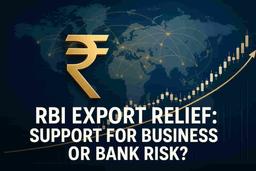India is grappling with extreme weather events almost daily, severely impacting industries by stalling production and destroying working capital. To combat this, the nation is prioritizing climate resilience through initiatives like the Carbon Credit Trading Scheme, climate finance guidelines, and innovative tools such as parametric insurance. Balancing economic development with climate risk management, India is exploring advanced resilience approaches to safeguard livelihoods and infrastructure from floods, heatwaves, and other climate shocks.
India is increasingly experiencing climate-related disasters, with extreme weather events occurring on an average of 322 days a year. These frequent shocks, including torrential rainfall leading to floods and intense heat waves, are hitting industrial hubs, causing production halts, straining infrastructure, and depleting working capital. Such recurrent disasters trigger distress migration, overload health services, disrupt education, and worsen debt cycles for vulnerable populations.
In response, India is actively pursuing innovative solutions and strengthening its commitment to net-zero emissions. Key initiatives include regulatory measures like the Carbon Credit Trading Scheme (CCTS), draft guidelines on climate finance, and sector-specific solutions such as a green steel taxonomy and climate-resilient agriculture. The country is also focusing on tightening standards through green bond directives and climate finance taxonomies.
However, India, like other developing nations, faces the challenge of balancing climate risk management with economic development. While adaptation measures are receiving significant attention, resilience finance – funds directed towards reducing the impact of climate shocks and enabling speedy recovery – is still in its nascent stages. Plausible resilience approaches include parametric insurance for swift payouts, climate-resilient agriculture and livestock products, emergency cash transfers, concessional hazard-responsive credit for small and medium enterprises (SMEs), and investments in cooling methods and water management.
Globally, innovative climate resilience instruments are being adopted. These include debt pause mechanisms where creditors suspend repayments after a disaster, pre-arranged credit lines for immediate liquidity during emergencies, and anticipatory finance that disburses funds based on scientific forecasts before a disaster strikes. Insurance-Linked Securities (ILS), particularly catastrophe (cat) bonds, are also used to transfer risk.
India is exploring climate-linked insurance schemes using parametric triggers (e.g., specific rainfall, temperature thresholds) for automatic payouts, which could reduce the burden on government disaster relief funds and provide timely aid. A pilot for parametric insurance has been successful in Nagaland, mirroring global practices in regions like the US, UK, Philippines, Japan, and Caribbean countries.
The country's robust digital infrastructure, especially Direct Benefit Transfers (DBT), makes forecast-based cash support schemes operationally feasible. Payouts for the Pradhan Mantri Fasal Bima Yojana (PMFBY) are increasingly remitted via DBT, strengthening the case for wider parametric insurance implementation. Emerging programs like SEWA's heat-trigger cover for informal workers and India's Heat Action Plans (HAPs) guided by the National Disaster Management Authority (NDMA) signal preparedness for effective parametric insurance schemes.
As India develops its climate resilience framework, regulators are expected to introduce policies that reduce insurance premiums and recovery times while easing the burden on government finances. Private capital involvement is crucial, supported by expedited development of simplified regulatory frameworks. The International Financial Services Centres Authority (IFSCA) is piloting a draft framework for ILS Cat bonds and parametric climate insurance.
Impact: This news has a significant impact on the Indian stock market. It highlights systemic risks from climate change that could affect various sectors like agriculture, insurance, infrastructure, and manufacturing. The development of resilience finance and new insurance instruments like parametric insurance can lead to more stable economic growth, potentially attracting investment in climate-resilient sectors and reducing the burden of disaster relief on government finances. This could positively influence investor sentiment towards companies and sectors actively adapting to climate risks. Rating: 8/10.
Difficult Terms:


